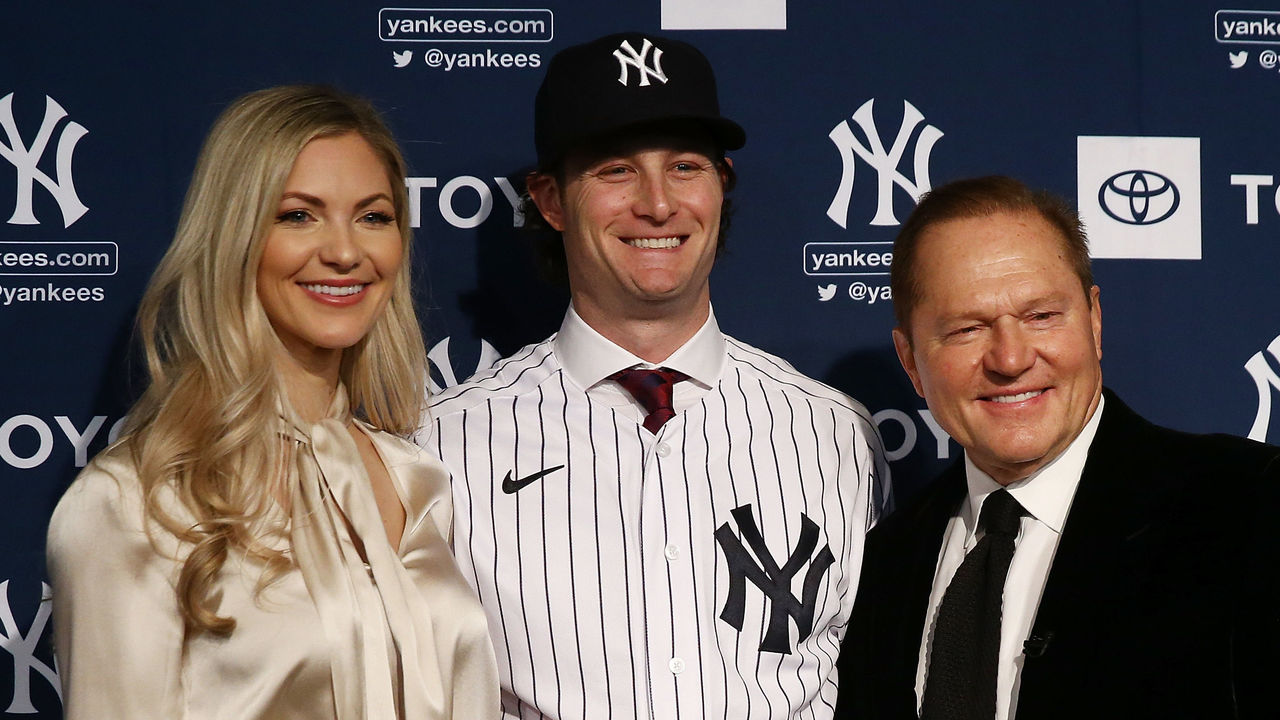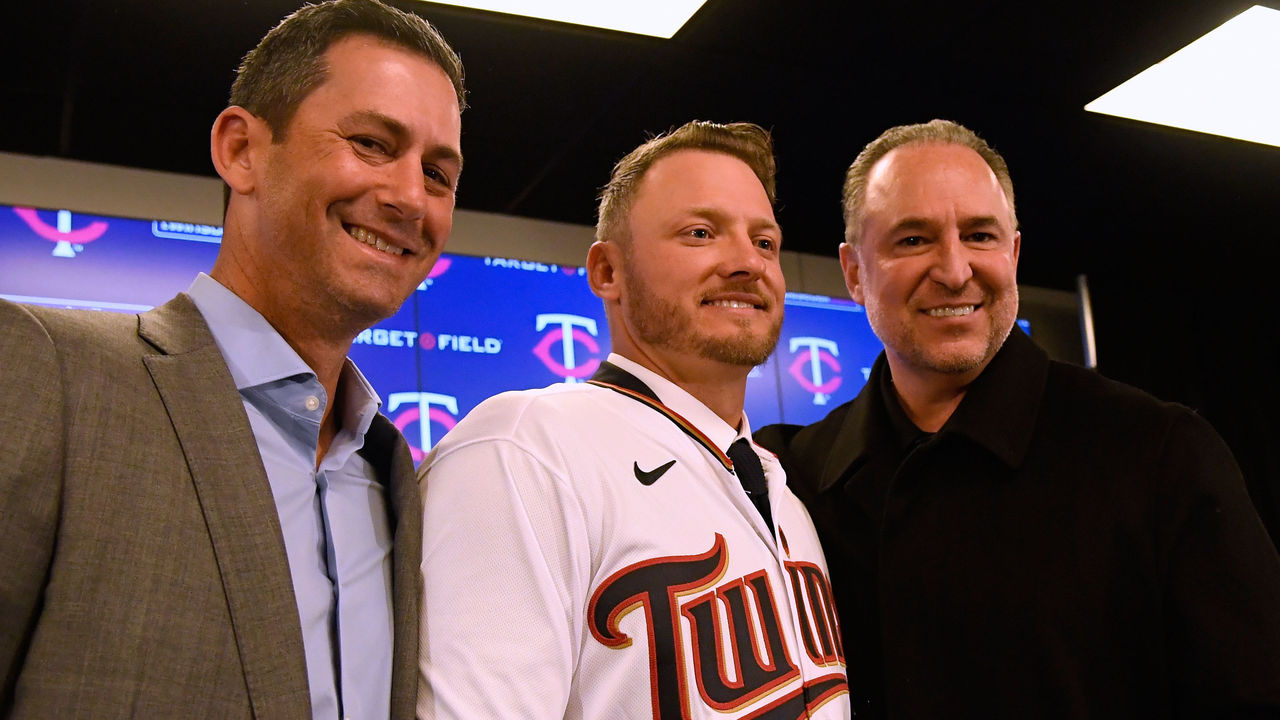Which agents squeeze out the most value for their MLB clients?
We know who baseball's best players are - we can watch them play, and the statistics about their performances are public. We know which teams' owners and general managers spend and which don't - there's public payroll data.
But we know much less about the game's other prominent offseason players: agents.
Sure, Scott Boras sits next to a star client at one or two press conferences every offseason to announce a headline-making contract, but how do agents compare relative to their peers and to public free-agent forecasts?
To answer these questions, we examined the last three winters of free-agent signings, looking at the total dollars signed by each agency and the length of the contracts. We also compared agencies' performances against two sets of data: Dan Szymborski's ZiPS projection system - which offers an assessment of a contract's fair value based on projected future performance - and FanGraphs' crowdsourced contract estimates.
Evaluating agents against those computer and human forecasts is our attempt to create a level playing field. After all, anyone who represents Gerrit Cole should do fairly well in terms of total dollars. But are they adding value beyond what a "replacement-level" agent would get for the same client?

Free-agent negotiations don't encapsulate all of an agency's value to a player, but maximizing a free agent's payday is an agency's most important task.
"It's all in anticipation of reaching the open market," one former MLB player said of his priorities in choosing an agency.
So what did we learn from this exercise? Collectively, agents fell short of computer and human predictions, although their performance is grouped remarkably tightly around a basic trend line.
For instance, of the 70 agencies that had a client sign a free-agent contract in the last three offseasons, only 18 beat the ZiPS forecasts for their combined clients. As a group, agents fell 7.1% short, producing $5.29 billion in actual dollars compared to the ZiPS forecast of $5.69 billion. ZiPS did not predict the contract length of deals, only expected performance value over the course of the actual contract term.
The human crowd at FanGraphs predicts both the contract length and value for the top 50 free agents each offseason. Agencies combined to fall 1.3% short of the crowdsourced median dollar estimates and came up 28 seasons shy of the median forecast for term as well (305 seasons versus 333).
But some agencies excelled, and some beat the forecasts regularly. The right representation in free-agent negotiations can prove to be well worth the agent's 5% commission, which is about the standard fee.

This analysis comes with caveats and limitations, of course. It only covers a three-year period, agencies had varying numbers of clients hit the market in those offseasons, and it doesn't account for the particular conditions of the free-agent market in those years. And because participants in the fan forecasts are self-selected, they can be overly optimistic or pessimistic.
Despite those limitations, it's clear that Boras is a true outlier. That's no surprise in terms of volume of dollars and players signed, but he's also well above-average when it comes to outperforming the public forecasts we used.
In the previous three offseasons, Boras' clients totaled $1.64 billion in free-agent contracts, or 31% of all dollars awarded to MLB free agents we analyzed. According to ZiPS, those Boras clients should have signed for $1.41 billion.
No one else was close in terms of raw volume.
Excel Sports Management totaled $509 million, the next-greatest sum, spread among an MLB-best 28 clients signed - one more player than Boras.
Boras clients beat their ZiPS forecasts by a combined $183 million. The closest firms - ALIGND, ACES, Frontline, and Ballengee Group - exceeded the computer model by between $15.6 million and $16.2 million.
Boras clients also totaled 78 seasons in those contracts, tops among all agencies. Boras' average dollars per year per client ($21.1 million) was the most of any agency that represented more than one client, and his average years per contract ranked second.
Boras excelled in both volume and percentage gained over projected value.
Among all 70 agencies, he ranked 11th in percentage gain versus the ZiPS forecasts. And among agencies that had at least five players tracked in the three-year period, Boras Corp trailed only the Ballengee Group (31.6%), whose top contract during that period was awarded to catcher James McCann.
Darren O'Day, Josh Osich, and Jordan Lyles all beat the ZiPS projection with the help of Ballengee.
So Boras beat a prominent projection system published on FanGraphs. How did he fare versus humans?
FanGraphs polls its readership every offseason for predictions on contract value and term for the top 50 free agents, as ranked by the site's editors. Among that class of free agents, Boras led in total players (18) and in total seasons in their deals (69).
Only four agencies reached 20 combined seasons (Boras, Excel, Wasserman, and CAA) in signed deals. And only Boras exceeded the average estimate, which was 64.8 years.

Boras also led in beating the crowd's median prediction by $211 million. The next-closest agency was the Ballengee Group, beating the median crowd estimate by $32.6 million - notable since Ballengee only had two top-50 free agents in those three offseasons and they signed for six years combined.
Among firms that signed combined contracts of at least 10 total years, Boras ranked second in percentage above the median crowdsource dollar predictions (15%), trailing only ACES (20.6%).
ACES, led by founding brothers Seth and Sam Levinson, had clients including Nathan Eovaldi, Daniel Murphy, and Joe Kelly beat their contract projections in recent years.
In terms of volume and per-contract performance, there is no one quite like Boras.
What makes Boras so effective in free agency? We know some of his playbook: He's long been regarded as a tough negotiator and creative in making markets. Dating back to the late George Steinbrenner, owners have lamented Boras' use of mystery teams that may or may not exist to drive up prices. He's willing to wait and wait for a market to develop for his clients, pushing deadlines to the brink.
"People call me all the time and say, 'Man, your players aren't signed yet,'" Boras said in early 2013. "Well, it doesn't really matter what time dinner is when you're the steak."
One agent said the key to negotiating is being "comfortable being uncomfortable."
Boras seems to thrive in that state.
And at a time when front offices have never had more data or a better understanding of aging curves, and when assessing player value is more of a science and less of an art, Boras has shown in recent years that he's sometimes able to bypass the front office and its quants and negotiate directly with owners.
Representing star clients helps too.
One agent from a smaller firm said that having a large roster of top-level players means an agent can be a kingmaker: "Leverage is everything." An ex-player who was represented by a large firm said Boras' effectiveness comes from "a combination of his skills and the players he represents."

Boras isn't perfect, however.
Of 27 Boras signings we tracked from the previous three offseasons, 16 beat the ZiPS forecast, but 11 underperformed. For example, Mike Moustakas fell far short of expectations in 2019, settling for a one-year deal, although the new deal he signed the following winter exceeded the public forecasts.
Larger agencies increasingly dominate the market - and not just for stars.
Of the 70 agencies to have a free agent signed since the 2018-19 offseason, eight - Excel (28), Boras Corp (27), Wasserman (18), ISE (13), ACES (13), CAA (12), Jet Sports (12), and Meister Sports Management (12) - accounted for 46% of players signed.
Sixty-one other agencies represented 159 players, fewer than three per shop over the three-year period. (And one player - relief pitcher David Robertson - represented himself prior to the 2019 season. He beat the ZiPS forecast by 12.8% and his median crowdsourced estimate by 4.5%.)
If an agency doesn't represent star players, it's more difficult to create bidding wars, ideally among large-market teams - a situation that's more conducive to exceeding projections.
As a total group, agents fell $400 million short of the ZiPS forecast, but the 56 smallest firms accounted for $321 million of that shortfall.
This might be a more macro-level trend than something specific to smaller agencies. With more teams shying away from the middle tier of free agents, and the middle class of players shrinking, it stands to reason that those clients' agents have a more challenging time in free agency.
"My job is to avoid casualties," an agent from a small firm said. "If my client can retire with enough money in the bank to do what he wants with the rest of his life, I consider that a success."
That doesn't mean a small agency can't do well. The top agency in terms of percentage gain versus ZiPS was a small firm, Martini Sports Management, that only had one client sign over the last three years: Derek Holland. The lefty pitcher beat the ZiPS projection by 84%. Holland signed a one-year deal for $7 million in 2019, while ZiPS projected $3.7 million.
The benefit of being represented by a smaller firm is that a client can receive the lion's share of the agency's focus. But a limited client base means those agencies don't have the same resources, and they could feel pressure to avoid overplaying their hand for a single client. Maximizing the value of contracts could require more consolidation among agencies.
As in other industries, and as among the players themselves, there seems to be a divide between the haves and have-nots when it comes to agencies. And for players, the agent who negotiates your contract this winter can make a world of a difference.
Travis Sawchik is theScore's senior baseball writer.